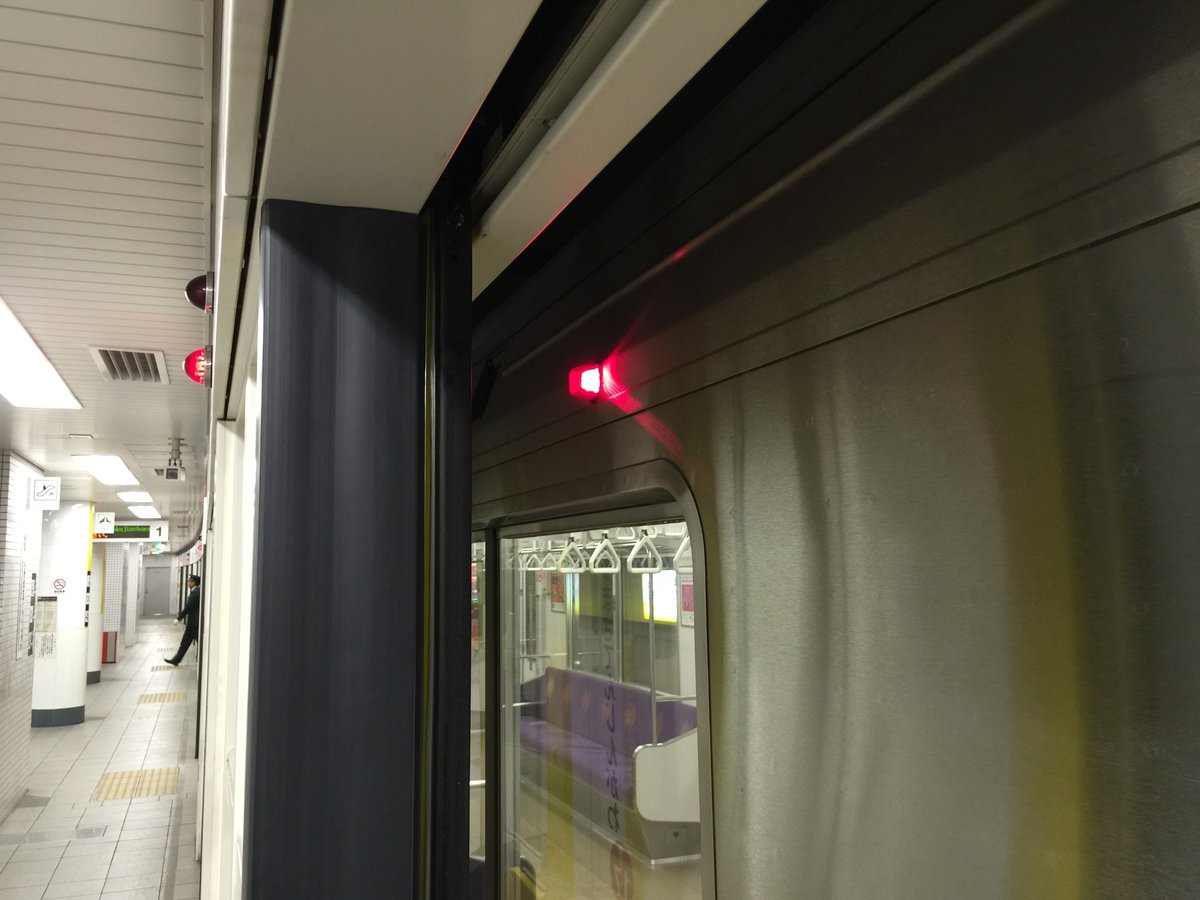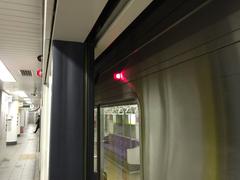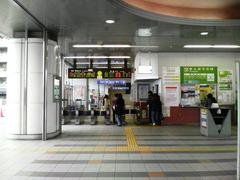
Nijo Station Kyoto: Visiting Hours, Tickets, and Comprehensive Travel Guide
Date: 14/06/2025
Introduction to Nijō Station Kyoto
Nijō Station (二条駅, Nijō-eki) is a dynamic gateway in Kyoto’s Nakagyō-ku district, seamlessly integrating the city’s historical legacy with urban convenience. Established in 1897 during the Meiji era, the station has witnessed Kyoto’s transition from imperial capital to modern metropolis. Its historic 1904 wooden station building, now preserved at the Kyoto Railway Museum, is a testament to its enduring significance.
Today, Nijō Station serves both the JR West Sagano Line (San’in Main Line) and the Kyoto Municipal Subway Tozai Line, providing direct links between central Kyoto and major cultural sites such as Arashiyama and the Kyoto International Manga Museum. The station’s contemporary design, including its unique hat-like roof, reflects traditional Japanese aesthetics while ensuring accessibility and convenience for all travelers.
As more than just a transit hub, Nijō Station is a launchpad for exploring Kyoto’s rich heritage. A short walk brings visitors to the UNESCO World Heritage Site of Nijō Castle, renowned for its samurai history and seasonal beauty, while nearby neighborhoods offer authentic local experiences. The station features multilingual signage, barrier-free facilities, and support for IC cards and tourist passes, accommodating both local commuters and global visitors.
This guide delivers thorough information on Nijō Station’s history, architecture, amenities, and nearby attractions—equipping you with everything needed for an efficient and culturally enriching visit to Kyoto.
For current details, always check the Official JR West Nijō Station page, the Kyoto City Tourism Official Site, and the Kyoto Railway Museum.
Contents Overview
- Introduction to Nijō Station
- Historical Development and Architecture
- Rail Services and Connectivity
- Practical Visitor Information
- Visiting Hours
- Ticketing
- Accessibility
- Directions
- Travel Tips
- Key Nearby Attractions
- Nijō Castle
- Kyoto Railway Museum
- Museum District
- Station Facilities and Layout
- Exploring Nijō Castle: Hours, Tickets, Accessibility
- Neighborhood Highlights and Local Experiences
- Sustainable Tourism Initiatives
- Safety, Accessibility, and Future Developments
- Frequently Asked Questions (FAQ)
- Summary Table of Nijō Station Facilities
- Must-See Historical Sites Near Nijō Station
- Day Trips Accessible from Nijō Station
- Call to Action
Nijō Station: A Gateway to Kyoto’s History and Culture
Nijō Station is not just a railway stop but a vibrant entry point to Kyoto’s historic heart and living traditions. Whether you’re planning your trip around Nijō Station visiting hours or seeking advice on tickets and local exploration, this guide consolidates all the essential information for a rewarding visit.
Historical Background
Opened in 1897, Nijō Station was originally the terminus of the Kyoto Railway—now the JR West Sagano (San’in Main) Line. Its early 20th-century wooden building, constructed in 1904, exemplifies Meiji-era architecture and is now preserved at the Kyoto Railway Museum, underscoring the station’s cultural and historical value.
With its proximity to Nijō Castle—a UNESCO World Heritage Site—Nijō Station has always been a strategic gateway for those exploring Kyoto’s samurai heritage. The addition of the Tozai Subway Line in 1997 further improved access throughout central and western Kyoto (JR West official site).
Architectural Evolution and Modernization
In 1996, Nijō Station underwent significant modernization: tracks were elevated, and a new building with a distinctive hat-shaped roof was constructed by Urabesekkei, an Osaka architectural firm. This design nods to traditional Japanese forms while prioritizing passenger flow and accessibility, with entrances on both Sembon Street (east) and the west side.
Rail Services and Connectivity
- JR West Sagano (San’in Main) Line: Links Kyoto Station to scenic destinations like Saga-Arashiyama.
- Kyoto Municipal Subway Tozai Line: Connects eastern and western Kyoto, with seamless transfer at Nijō Station.
- Bus Connections: Kyoto City Bus routes 206, 201, and 46 stop here, facilitating access to various city districts.
The Tozai Line’s extension to Uzumasa Tenjingawa Station in 2008 further enhanced transit options, making Nijō Station an essential junction for both tourists and locals.
Practical Visitor Information
Visiting Hours
- Station: Open daily from approximately 5:00 AM to midnight (train schedules may vary slightly).
- Ticket Counters & Information Desks: Open from 6:00 AM to 10:00 PM.
Ticketing
- Automated Machines: Available for both JR and subway lines, with English-language support.
- IC Cards: ICOCA, Suica, PASMO, and other major cards are accepted.
- Tourist Passes: JR Kansai Area Pass and Kyoto Subway & Bus Pass provide convenience and savings (Kyoto Transportation Guide).
Accessibility
- Elevators, escalators, and barrier-free pathways are available throughout the station.
- Accessible restrooms and tactile paving for visually impaired travelers.
Directions
- From Kyoto Station: 2 stops (approx. 5 minutes, 190 yen) via the JR Sagano Line.
- To Nijō Castle: Exit via the north gate and walk east for 5 minutes (about 400 meters).
Travel Tips
- Peak Times: Crowds are heaviest during cherry blossom season (late March–mid-April) and autumn foliage (November). Visit early morning or late afternoon for a quieter experience.
- Luggage: Coin lockers are available near ticket gates for secure storage.
Key Nearby Attractions
Nijō Castle
A short walk from Nijō Station, this UNESCO World Heritage Site is famous for its samurai history, traditional architecture, and beautiful gardens.
Kyoto Railway Museum
Home to the original 1904 Nijō Station building and extensive locomotive exhibits.
Kyoto International Manga Museum
Accessible via the Tozai Line, this museum boasts a vast collection of manga and related cultural displays.
Museum District and Local Markets
The area surrounding Nijō Station features historic machiya townhouses, vibrant shopping arcades, and traditional markets, offering an authentic Kyoto experience.
Station Facilities and Layout
General Overview
Nijō Station’s modern structure balances functionality and tradition, with clear signage in Japanese and English, barrier-free design, and efficient passenger flow.
Platform Arrangement
- JR Sagano Line: Two elevated side platforms, fully accessible via elevators and escalators.
- Tozai Subway Line: Underground island platform with platform screen doors for safety.
Amenities
- Ticketing: Automated and staffed counters for both JR and subway lines.
- Information: Multilingual information desks, real-time digital signage, and lost & found.
- Accessibility: Elevators, escalators, tactile paving, and accessible restrooms.
- Restrooms: Well-maintained, with multipurpose and baby-changing facilities.
- Coin Lockers: Available in various sizes, accessible 24 hours.
- Retail & Dining: Convenience stores, cafés, souvenir shops, and local eateries.
- Wi-Fi: Complimentary throughout the station.
- ATMs: International-compatible machines (Japan Post Bank, Seven Bank).
- Taxi Stand: Located at the south exit.
- Bicycle Parking: Outside station exits.
- Emergency Services: Call buttons and intercoms on platforms and elevators.
Visiting Nijō Castle: Essential Information
Historical and Cultural Background
Built in 1603 as the Kyoto residence of Tokugawa Ieyasu, Nijō Castle is celebrated for its Ninomaru Palace with “nightingale floors” and meticulously landscaped gardens. It is a highlight for history enthusiasts and photographers alike (JR Pass Nijo Castle Guide).
Opening Hours & Ticket Prices
- Hours: 8:45 AM – 5:00 PM (last admission: 4:00 PM). Closed December 26 – January 4, and some Tuesdays.
- Admission:
- Adults: 1,030 yen
- High school students: 350 yen
- Elementary/junior high: Free
- Full-access tickets (including palace interiors): 1,300 yen
- Grounds only: 800 yen
- Tickets: Purchase at the entrance or online; English audio guides and group discounts available.
Accessibility
The castle grounds are mostly accessible, but some historic interiors may have limited access. Ramps and accessible restrooms are provided; inquire at entry for assistance.
Guided Tours & Events
English-language tours are offered seasonally. Seasonal events, such as nighttime illuminations during cherry blossom and autumn foliage, offer unique experiences (Intrepid Scout Nijo Castle Guide).
Photography Tips
Outdoor photography is encouraged; no flash or tripods inside buildings. Early morning offers the best light and fewer crowds.
Neighborhood Highlights and Local Experiences
- Sanjo Shopping Street: Lined with local shops, izakayas, and cafés.
- Shinsenen Garden: A serene Heian-period garden near Nijō Castle.
- Mibu-dera Temple: Associated with the Shinsengumi samurai.
- Kyoto Imperial Palace: Accessible by subway or bus for a broader historical perspective.
Sustainable Tourism Initiatives
Nijō Station helps manage visitor flows, dispersing crowds from Kyoto Station and encouraging exploration of less-traveled neighborhoods. Integration with bus routes and bike rentals promotes eco-friendly tourism (Travel Caffeine Kyoto Guide).
Safety, Accessibility, and Future Developments
The station features modern security, CCTV, and well-lit public spaces. Planned improvements include digital wayfinding, expanded tourist services, and enhanced cycling infrastructure, supporting Kyoto’s goal of 60 million annual visitors by 2030.
Frequently Asked Questions (FAQ)
Q: What are Nijō Station’s operating hours?
A: Trains run from approximately 5:00 AM to midnight. Station facilities generally open 6:00 AM–10:00 PM.
Q: How do I buy tickets?
A: Use automated machines or staffed counters; IC cards are accepted.
Q: Is Nijō Station wheelchair accessible?
A: Yes. Elevators, escalators, tactile paving, and barrier-free restrooms are available.
Q: What are Nijō Castle’s opening hours?
A: 8:45 AM–5:00 PM (last entry 4:00 PM), closed December 26–January 4 and some Tuesdays.
Q: Are guided tours available at Nijō Castle?
A: English tours are offered seasonally; check the official website for details.
Q: How do I reach Nijō Castle from the station?
A: Exit via the north gate and walk east about 400 meters (5–10 minutes).
Summary Table: Nijō Station Key Facilities
| Facility | Location | Accessibility | Hours |
|---|---|---|---|
| Ticket Machines | JR & Subway Entrances | Yes | 05:00–00:00 |
| Coin Lockers | Near Ticket Gates | Yes | 24 hours |
| Restrooms | Concourse & Platforms | Yes | 05:00–00:00 |
| Information Desk | Main Concourse | Yes | 07:00–21:00 |
| Convenience Stores | Concourse | Yes | 06:00–23:00 |
| ATMs | Concourse | Yes | 05:00–00:00 |
| Wi-Fi | Throughout Station | Yes | 24 hours |
| Bicycle Parking | Outside Exits | Yes | 24 hours |
Must-See Historical Sites Near Nijō Station
| Attraction | Walking Time | Public Transport | Admission (Adult) |
|---|---|---|---|
| Nijō Castle | 13 min | — | 800–1,300 yen |
| Kyoto International Manga Museum | 15 min | 1 subway stop | 900 yen |
| Shinsenen Garden | 10 min | — | Free |
| Mibu-dera Temple | 20 min | 1 bus stop | Free |
| Kyoto Railway Museum | 20 min | 2 bus stops | 1,200 yen |
| Nishijin Textile Center | 25 min | 2 bus stops | Free |
| Kitano Tenmangu Shrine | 30 min | 3 bus stops | Free |
Notable Day Trips from Nijō Station
- Arashiyama Bamboo Grove: 20 min by JR train; renowned for scenic beauty.
- Kinkaku-ji (Golden Pavilion): Bus or taxi; famous for gold-leaf architecture.
- Ryoan-ji Temple: Accessible by bus; well-known for its Zen rock garden.
Visual Aids and Maps
- Nijō Station’s hat-like roof and original wooden building at the Kyoto Railway Museum (Kyoto Railway Museum).
- Map showing walking routes from Nijō Station to Nijō Castle (Kyoto City Tourism Official Site).
Internal and External Links
- Official JR West Nijō Station page
- Kyoto City Tourism Official Site
- Kyoto Railway Museum
- Intrepid Scout Nijo Castle Guide
- JR Pass Nijo Castle Guide
- Kyoto City Transportation Bureau
- Travel Caffeine Kyoto Guide
Call to Action
Ready to discover the best of Kyoto via Nijō Station? Download the Audiala app for offline maps, audio guides, and the latest updates on Kyoto’s top attractions—including Nijō Castle. For more travel tips and inspiration, follow us on social media and explore our related articles on Kyoto’s rich cultural heritage.
Sources and Further Reading
- Nijō Station: Your Complete Guide to Visiting Kyoto’s Historic Railway Hub and Nearby Attractions, 2025
- Nijō Station in Kyoto: Visiting Hours, Tickets, and Nearby Historical Sites, 2025
- Nijō Castle Visiting Hours, Tickets, and Guide: Exploring Kyoto’s Historic Site via Nijō Station, 2025
- Kyoto City Transportation Bureau, 2025
- Kyoto City Tourism Official Site, 2025
- Kyoto Railway Museum, 2025
- Travel Caffeine Kyoto Guide, 2025
- Intrepid Scout Nijo Castle Guide, 2025
- JR Pass Nijo Castle Guide, 2025












































































